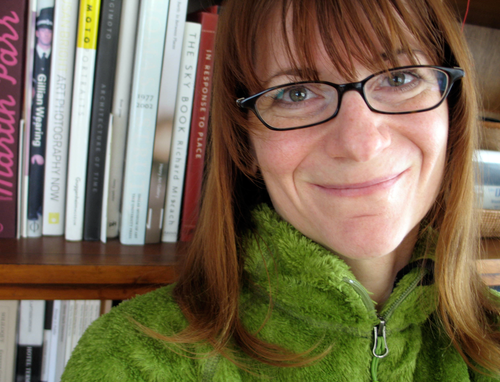
A couple years ago, a friend introduced me to the work of conceptual artist Jan Estep. But instead of calling her a conceptual artist, my friend referred to her, just as accurately, as an Artistphilosopherpoet.
While, like other conceptual artists, her primary medium is ideas—which she communicates through sculpture, photography, video, sound installation, and writing—her work is uncommonly integrated; it addresses not only the mind but body and spirit, and is as likely to utilize humor as obscure philosophical reference—and often employs both at once.
She holds a PhD in philosophy and an MFA in visual art. She was an editor for the New Art Examiner before becoming a professor in the art department at the University of Minnesota. Much of her work can be accessed through her website, www.janestep.com. Two current projects include a Buddhist meditation installation at the Minneapolis Institute of Arts and a collaborative project with neuroscientists investigating the relationship between imaging and data.
We discussed meeting up to conduct this interview in person, but it was twenty below in Minneapolis, and we decided email would work just fine.
—Scott F. Parker
I. IN WHICH WITTGENSTEIN IS NOT DISCUSSED
THE BELIEVER: Before going to grad school in art you studied with William Gass for your PhD in philosophy. How did he influence your movement between academics and art?
JAN ESTEP: It was total luck to have Gass on the philosophy faculty at Washington University, to study and TA for his lecture classes. He absolutely loves language, the feel of it in the body, the play of it conceptually, the tour de force of a writer’s thinking laid bare on the page. He gave permission to find pleasure in thinking and writing, permission not to produce academic prose but find some alternate means. The more eclectic graduate students in the department gravitated to him as their dissertation advisor, those who didn’t quite fit in. Having him there was a real-life example of what was possible: finding a home within academia but violating, successfully, the disciplinary writerly conventions of the field. He also, bless him, read every single word of my dissertation drafts, much of which was too personal and had to be removed, without shaming me for letting my mind do whatever it needed en route to the final public version. I was very shy then and too intimidated to have a grown-up relationship with him personally, but I got just the right amount of support and encouragement to continue and to trust the value of my own mind. He was the only faculty member who knew I was secretly painting in my basement while working on my...
You have reached your article limit
Sign up for a digital subscription and continue reading all new issues, plus our entire archives, for just $1.50/month.
Already a subscriber? Sign in




